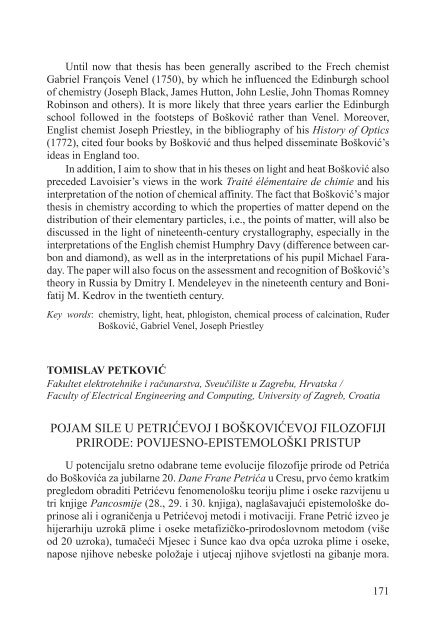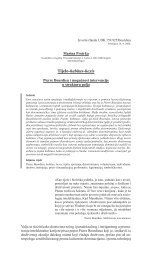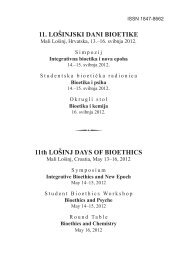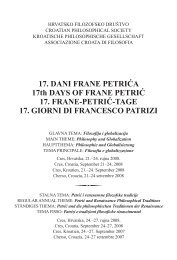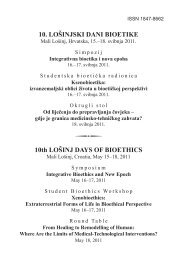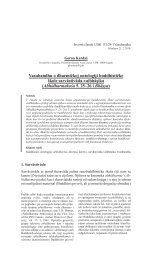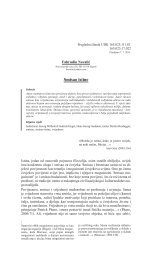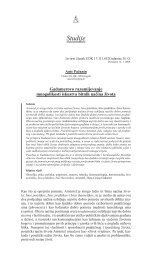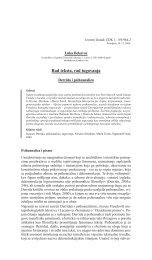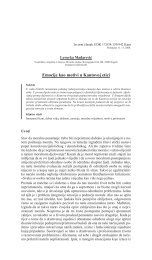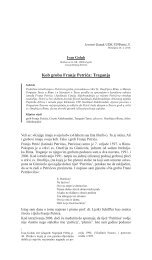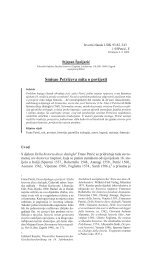Programska knjižica - Hrvatsko filozofsko društvo
Programska knjižica - Hrvatsko filozofsko društvo
Programska knjižica - Hrvatsko filozofsko društvo
You also want an ePaper? Increase the reach of your titles
YUMPU automatically turns print PDFs into web optimized ePapers that Google loves.
Until now that thesis has been generally ascribed to the Frech chemist<br />
Gabriel François Venel (1750), by which he influenced the Edinburgh school<br />
of chemistry (Joseph Black, James Hutton, John Leslie, John Thomas Romney<br />
Robinson and others). It is more likely that three years earlier the Edinburgh<br />
school followed in the footsteps of Bošković rather than Venel. Moreover,<br />
Englist chemist Joseph Priestley, in the bibliography of his History of Optics<br />
(1772), cited four books by Bošković and thus helped disseminate Bošković’s<br />
ideas in England too.<br />
In addition, I aim to show that in his theses on light and heat Bošković also<br />
preceded Lavoisier’s views in the work Traité élémentaire de chimie and his<br />
interpretation of the notion of chemical affinity. The fact that Bošković’s major<br />
thesis in chemistry according to which the properties of matter depend on the<br />
distribution of their elementary particles, i.e., the points of matter, will also be<br />
discussed in the light of nineteenth-century crystallography, especially in the<br />
interpretations of the English chemist Humphry Davy (difference between carbon<br />
and diamond), as well as in the interpretations of his pupil Michael Faraday.<br />
The paper will also focus on the assessment and recognition of Bošković’s<br />
theory in Russia by Dmitry I. Mendeleyev in the nineteenth century and Bonifatij<br />
M. Kedrov in the twentieth century.<br />
Key words: chemistry, light, heat, phlogiston, chemical process of calcination, Ruđer<br />
Bošković, Gabriel Venel, Joseph Priestley<br />
TOMISLAV PETKOVIĆ<br />
Fakultet elektrotehnike i računarstva, Sveučilište u Zagrebu, Hrvatska /<br />
Faculty of Electrical Engineering and Computing, University of Zagreb, Croatia<br />
POJAM SILE U PETRIĆEVOJ I BOŠKOVIĆEVOJ FILOZOFIJI<br />
PRIRODE: POVIJESNO-EPISTEMOLOŠKI PRISTUP<br />
U potencijalu sretno odabrane teme evolucije filozofije prirode od Petrića<br />
do Boškovića za jubilarne 20. Dane Frane Petrića u Cresu, prvo ćemo kratkim<br />
pregledom obraditi Petrićevu fenomenološku teoriju plime i oseke razvijenu u<br />
tri knjige Pancosmije (28., 29. i 30. knjiga), naglašavajući epistemološke doprinose<br />
ali i ograničenja u Petrićevoj metodi i motivaciji. Frane Petrić izveo je<br />
hijerarhiju uzrokā plime i oseke metafizičko-prirodoslovnom metodom (više<br />
od 20 uzroka), tumačeći Mjesec i Sunce kao dva opća uzroka plime i oseke,<br />
napose njihove nebeske položaje i utjecaj njihove svjetlosti na gibanje mora.<br />
171


